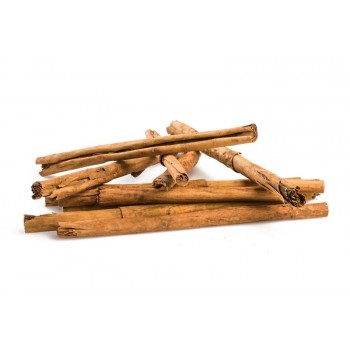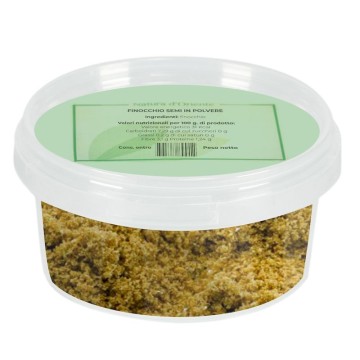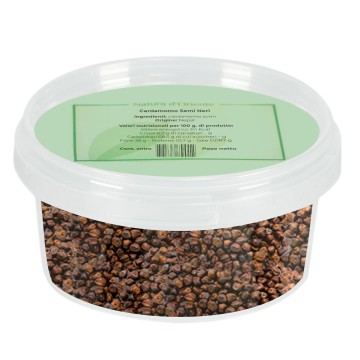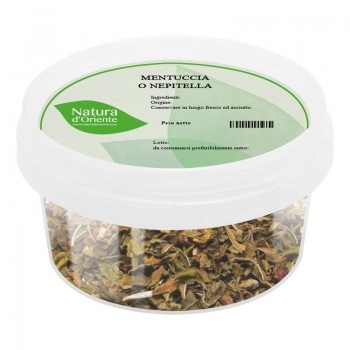The ground version of 100% turmeric is convenient for versatile and practical use. In oriental culture it is traditionally appreciated for its healthy qualities in herbal medicine and for its particular flavor profile on dishes. It is a base spice for numerous Indian and Middle Eastern dishes, present in most curry powder blends. It gives dishes a lively yellow-orange color, spread evenly across the plate. It comes from the rhizome of the plant, called turmeric root, reduced to powder for ease of use. From the East it arrived in European cuisine in the Middle Ages, considered “Indian saffron” or “yellow ginger” due to its similar color. It has recently become popular in the Western world not only as a seasoning spice, but for its nutritional benefits.
Turmeric: properties and benefits
Used for millennia for its properties, turmeric is still loved and studied today for its content of beneficial compounds. The antioxidants contained in the rhizome of the plant are curcuminoids, of which curcumin is the main active element. The nutrients from turmeric can be beneficial to our well-being. They help improve the body's antioxidant capacity, i.e. defend cells from oxidative damage - a process underlying cellular aging and other risks. Antioxidants counteract the reactions that free radicals trigger in the body, which are harmful to our well-being. A pinch of turmeric in the kitchen is enough to take advantage of its antioxidant and digestive virtues. As a spice, its digestive function has always been known together with liver function. It stimulates the gallbladder to produce bile, facilitating proper digestion and a reduction of air in the abdomen. Turmeric in cooking or in infusions is a natural remedy for the well-being of the intestine, helping to soothe irritations. In the case of digestive difficulties, it is preferable to consume turmeric powder, in the right doses. Excessive intake of turmeric should be avoided if you have gallstones, as it may worsen the existing condition. It has a supporting action on liver function, purifying the liver, facilitating the body in the process of expelling toxins. Furthermore, the curcumin contained in the spice is useful for joint function, alleviating some symptoms of joint inflammation. For the well-being of the immune system, turmeric contributes the substance called lipopolysaccharide. The use of this spice may be suitable for alleviating some disorders of the menstrual cycle and premenstrual syndrome. It can attenuate mood changes and act on digestive well-being, to ease menstrual cramps and gastrointestinal disorders. Furthermore, the estrogenic activity of turmeric (phyto-estrogens) is studied as a useful agent for promoting menstrual flow. The nutrients in this spice also make it useful in cosmetics, for hair and skin. Among the historical properties of turmeric, it is used as a natural soothing remedy in case of skin irritation. The bright yellow color due to curcumin is used for dyeing fabrics. It is usually recommended to take turmeric up to 2-3 grams per day with food, using caution in its consumption. For good assimilation it is advisable to consume this spice in your diet together with healthy fats such as oils, avocados, nuts and seeds. To enhance the absorption of curcumin and increase its effects, it is useful to consume it together with black pepper, given the content of piperine - a natural substance that increases the assimilation of curcumin. By combining curcumin and piperine, useful effects can also be obtained for stimulating the metabolism and improving mood. This spice is usually safe, but in some rare cases it can cause allergic reactions or interact with blood-clotting medications. Excessive doses of turmeric should be avoided in case of gallbladder disease. If you notice any negative effects, stop taking it and consult a doctor.
Ground turmeric: how to best use premium quality in the kitchen
As a food spice it is appreciated for its pungent and warm flavor, reminiscent of ginger but with a more bitter, earthy note. The aroma of turmeric in dishes is delicate, with a slightly acrid nuance, and is reduced during cooking. It gives a spicy fragrance typical of many Indian and oriental dishes, and a yellow color to dishes - due to the concentrated pigment component. Ground turmeric is used as a colorful garnish in recipes with success, as it makes the dish uniformand lively in tone. Just add a tip of a teaspoon (1/8) of the powder to get a bright yellow-orange color. Be careful, because an excessive quantity can make the color of the dishes dark yellow and "muddy", unappealing to the eye. Another benefit of turmeric powder in recipes is that it eliminates the water and moisture content of the root. It is therefore practical in the ground version to flavor soups and stews, dishes with legumes and vegetables. The dried turmeric powder in this high-quality version is very concentrated and flavorful, so less is needed to get the same flavor as the fresh one. Often the dose is halved: ½ teaspoon of ground turmeric is enough for seasoning instead of 1 teaspoon of crushed fresh root. In any case, it can still be dosed more easily than other spices: its flavor is not as strong, even in larger quantities.
International cuisine: Turmeric is a typical ingredient of Indian cuisine, present in almost all meat and vegetable dishes. In Indonesia and North Africa it is used in the preparation of colored and flavored rice pilaf. A typical Indonesian recipe from Bali, in particular, seasons the rice by mixing ground turmeric with coconut milk and lemon grass.
Savory recipes: the ground turmeric version conveniently adds flavor to broths, soups, rice, bean-based dishes or cereals. It is increasingly spreading as a spice in vegetarian and vegan cuisine on roasted vegetables, tofu, legumes. Excellent in egg-based dishes, it gives a special flavor to cheeses.
Meat: Turmeric is highly appreciated in meat stews, useful when minced to flavor meatballs, stews and meat rolls. It is used both sprinkled during preparation and at the end of cooking, when it gives a spicy touch to red and white meats, especially chicken. It is also used for seasoning by dissolving turmeric powder in hot broth.
Fish: Turmeric is used for fish soups or seafood recipes with boiled cod, hake and similar fish. Colourant: it is used as a mustard colourant, for some types of cheeses and liqueurs. Ground turmeric can add an appetizing tone to scrambled eggs, desserts, rice and pasta. Baked products: as a coloring and aromatic it is used for bread, taralli, rolls, breadsticks, focaccias and other specialties in the dough. Ground turmeric is also used in the preparation of desserts such as cakes, creams, puddings, biscuits and muffins. Drinks: the powdered version is perfect for flavoring drinks such as golden milk, smoothies, fruit juices and centrifuges with turmeric. The turmeric infusion is obtained by inserting ½ teaspoon of ground turmeric into a boiling cup (you can add a few sprinkles of black pepper in the sachet or strainer); leave to infuse for about 5 minutes. Mixtures: Turmeric is one of the ingredients in Indian curry and other Middle Eastern spice mixes. Sauces: turmeric adds an exotic and unique note to vegan sauces, sweet and sour chutneys, vinaigrettes, mayonnaise. It can be added to honey and sweet creams, combined with tomato sauces and gravies.
Indonesian-style fried tofu
Ingredients: 1 pack of tofu – 1 chicken stock cube (or vegetable) - Garlic powder - Pepper ground - Turmeric powder - 2 teaspoons of salted soy sauce - 2 tablespoons of olive oil - 300 cc of hot water – 1 knob of butter
Preparation
Dissolve the stock cube in hot water. Add garlic powder, ground pepper, turmeric powder and salted soy sauce. Cut the tofu into cubes. In a bowl, place the tofu and water mixture. Leave to soak for about 15 minutes. Heat the oil and butter in a pan. Fry the tofu over medium heat, stirring often - extend the cooking time until crispy.
Origins and history of cultivation
The spice comes from the Curcuma longa plant, belonging to the Zingiberaceae family, the same as ginger. The so-called root of the plant (the rhizome or underground stem) is the source of the spice, and the powdered version of turmeric is obtained by drying and grinding this rhizome. The plant was originally born in the territories of the Indian subcontinent and south-east Asia, which offer the right climate to grow at its best, warm temperatures between 20 and 30 °C. It reaches just one meter in height.
The plant has been used for culinary and medical purposes for over 4,500 years. Around 500 BC Turmeric became a well-known spice in Ayurvedic medicine for treating congestion, skin lesions, treating arthritis, indigestion, and other conditions - Ayurvedic literature contains over 100 different terms for turmeric. The Hindu religion has also used this spice in rituals, particularly as a dye. The yellow obtained from it was related to the sun and dyed some precious fabrics such as the robes of Buddhist monks. It was used to create cosmetics for weddings and holidays, dyeing brides' hair.
In the Middle Ages, turmeric was introduced from the East to other continents, by sailors and spice merchants. In Europe and then in Africa, it was exchanged with saffron due to its similar color - in the 12th century Marco Polo described turmeric, marveling at its qualities so similar to those of saffron. He reached America and Jamaica in the eighteenth century. In recent years, turmeric has attracted interest all over the world, due to its natural healing properties; it has spread in the kitchen in many recipes and preparations. The cultivation of turmeric is now widespread throughout the tropics, and India has been the largest producer since ancient times.









 No reward points for this product.
No reward points for this product.















